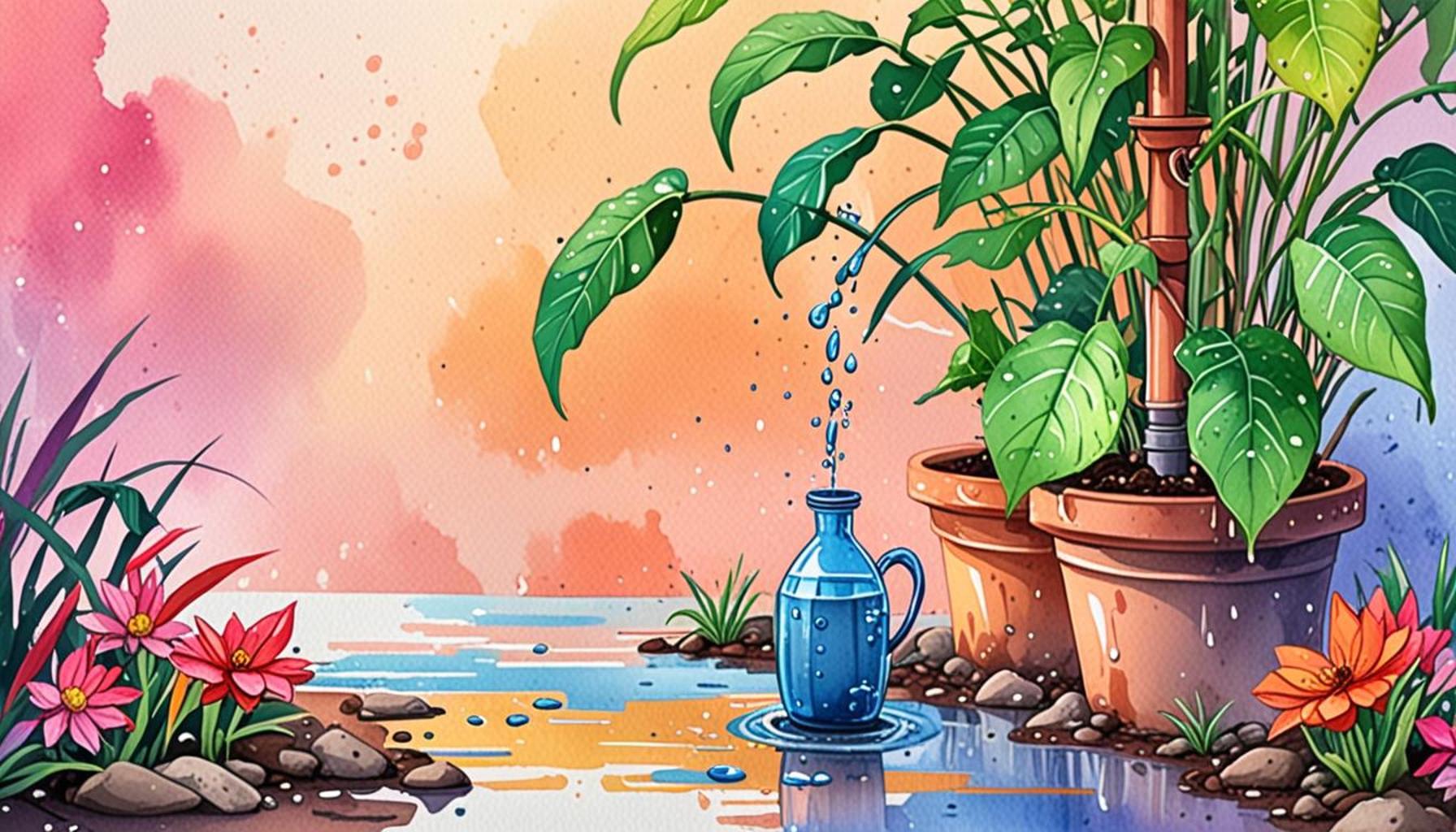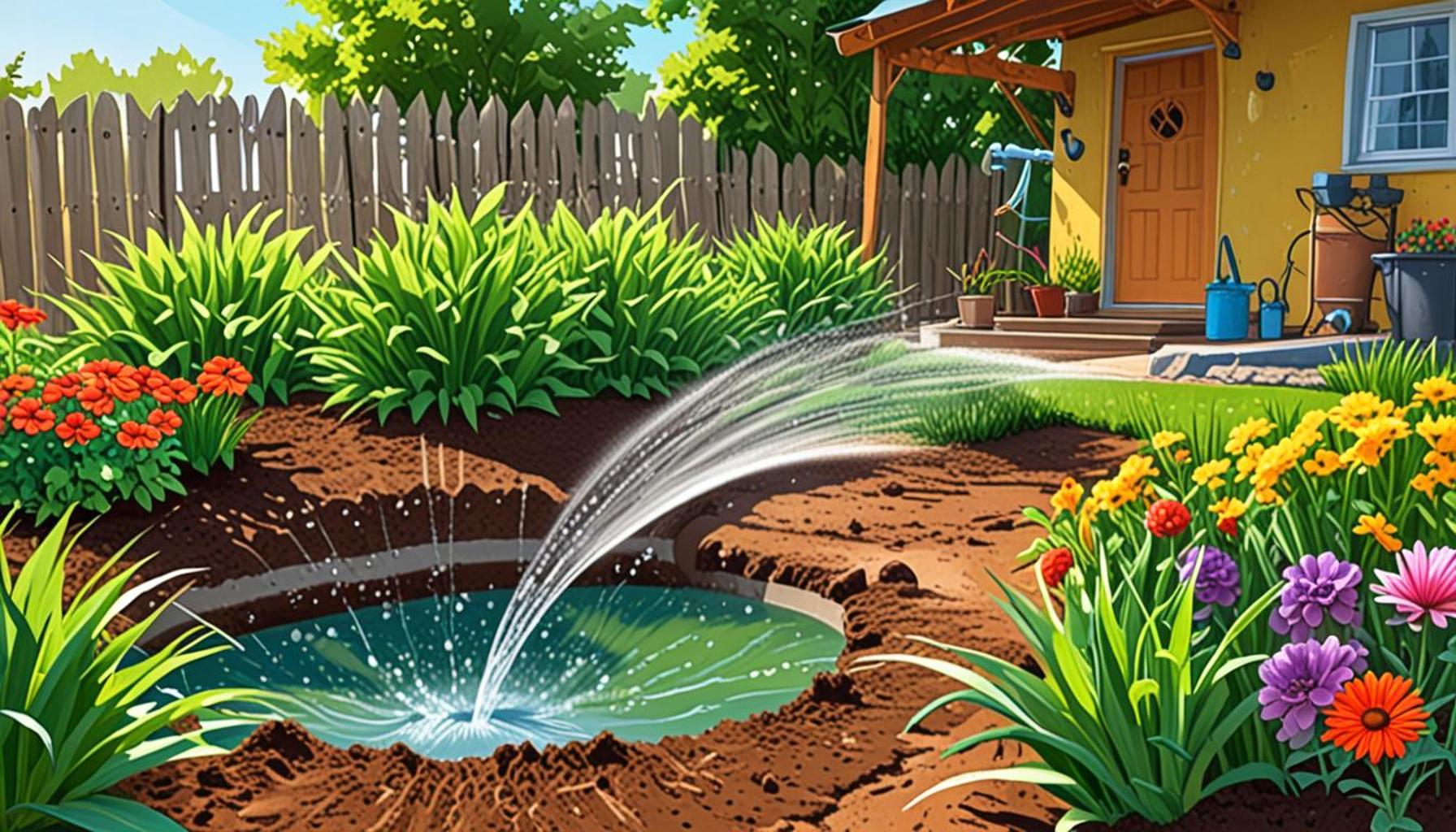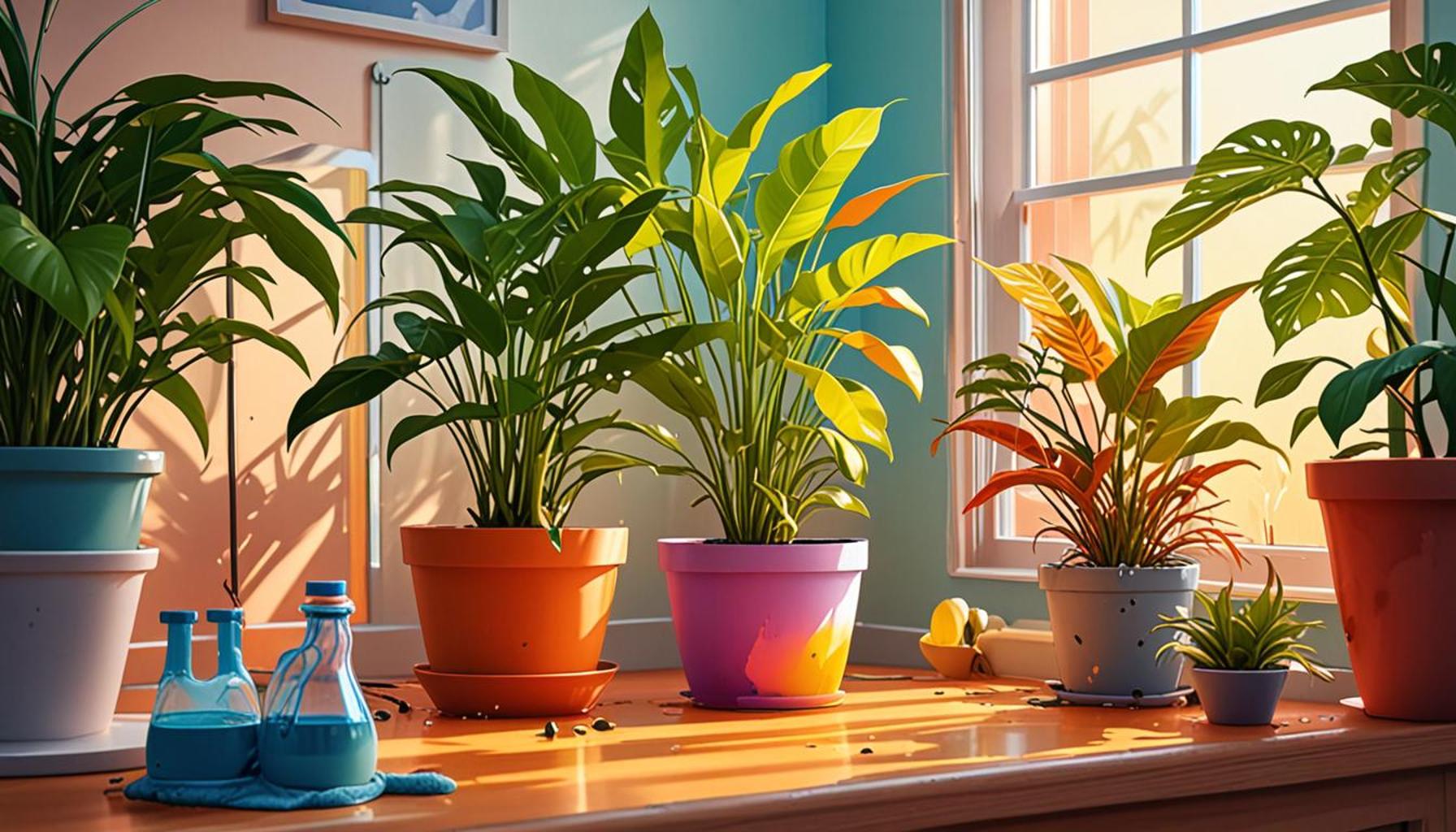The Best Irrigation Techniques for Beginners in Gardening
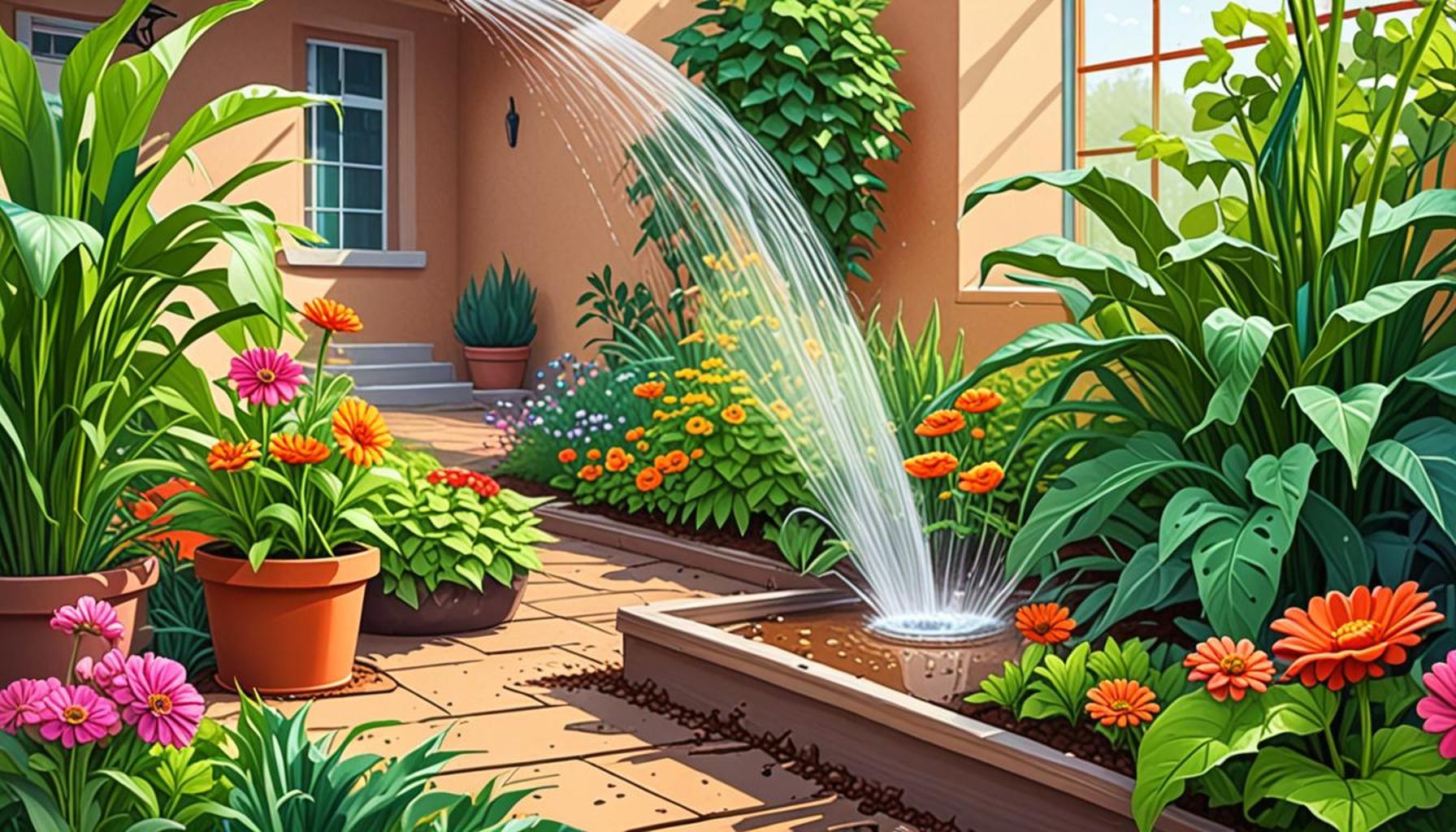
Understanding Irrigation Techniques
Starting a garden can be both exciting and daunting, especially when it comes to keeping plants hydrated. Effective irrigation techniques play a pivotal role in ensuring healthy growth and abundant yields. For beginners, understanding the various methods available can simplify the gardening experience and lead to thriving plants.
Water is the lifeblood of any garden, and applying the right irrigation method can make a significant difference. Whether you are nurturing delicate seedlings or robust perennials, the choice of how to water your plants can affect their growth rate, resistance to diseases, and overall vigour. Here, we’ll delve deeper into several essential irrigation techniques that every new gardener should consider, highlighting their unique benefits and practical applications.
Drip Irrigation
Drip irrigation is an innovative method that delivers water directly to the root zone of the plants through a network of tubes and emitters. This system minimizes water waste and reduces the risk of fungal diseases by keeping foliage dry. Particularly beneficial for vegetable and flower gardens, drip irrigation allows for efficient use of water, especially in arid regions of the United States like parts of Arizona and California.
For beginners, setting up a simple drip system can seem daunting; however, many local garden centers offer starter kits that include everything needed for your garden’s specific size. The precision of drip irrigation mitigates the threat of overwatering, a common pitfall for novice gardeners.
Soaker Hoses
Soaker hoses are another excellent option for evenly watering rows of plants. These porous hoses can be laid out on the soil surface or buried under mulch, allowing water to seep slowly and irrigate the ground. Ideal for flower beds and vegetable patches, soaker hoses can save both time and effort while ensuring that water reaches the root systems effectively.
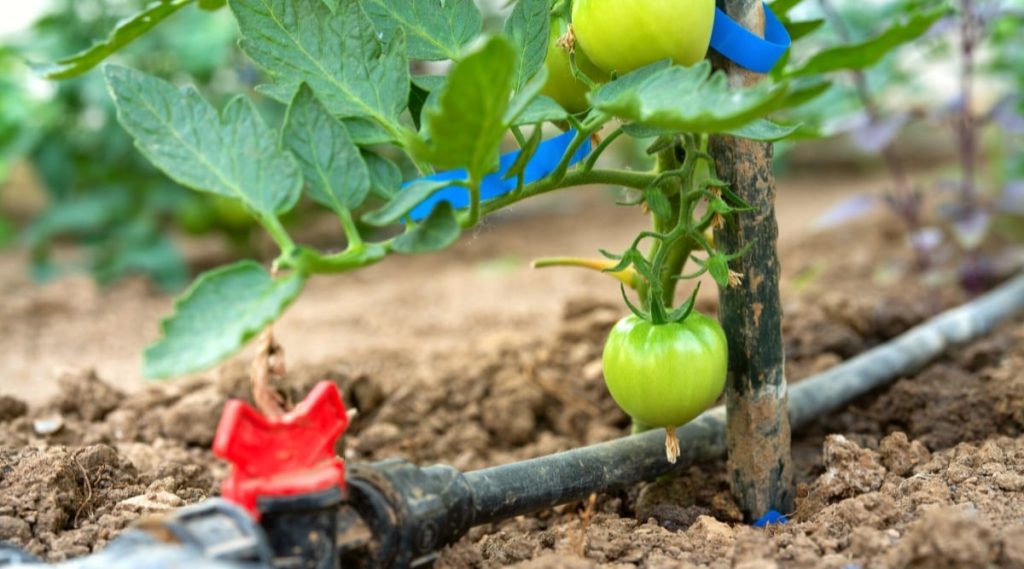
With their easy installation and maintenance, soaker hoses are an appealing choice for beginners. Gardeners in regions with unpredictable weather can especially benefit from using them, as they ensure that moisture penetrates deeply into the soil, even during irregular rainfall.
Sprinkler Systems
Sprinkler systems are particularly advantageous for larger gardens, effectively covering a wide area with minimal effort. They come in various forms, including stationary, oscillating, or rotating head sprinklers. This versatility allows gardeners to choose a system that aligns with the layout and size of their garden.
For example, families in suburban neighborhoods can utilize automatic sprinkler systems that operate on timers, saving valuable time. Despite their convenience, it’s crucial to monitor sprinkler usage, especially during hot summer months, to prevent water waste and ensure optimal plant hydration.
Hand Watering
Hand watering is a straightforward, flexible, and often therapeutic method of irrigation suitable for small gardens or potted plants. This technique allows gardeners to observe individual plants more closely, making it easy to evaluate their specific water needs. By using a watering can or hose with a nozzle, gardeners can target areas that require more attention and adjust their watering behaviors accordingly based on weather conditions and soil moisture.
This method is particularly effective for new gardeners who are still learning about their plants’ unique needs. Hand watering not only provides a personal connection to the garden but also fosters a better understanding of when and how much water is necessary.
Choosing the right irrigation technique can not only save time and water but also enhance plant health. It’s essential to consider factors like soil type, climate, and plant needs when making your selection. Incorporating efficient irrigation methods from the beginning will not only lead to a flourishing garden but will also create a sense of pride in the gardening process. With the right information at hand, beginners can embark on a successful gardening journey with confidence.
This guide will explore each method in detail, helping you make informed decisions and nurturing your green thumb from the very start!
DISCOVER MORE: Click here to maximize your vegetable harvest
Essential Irrigation Techniques to Consider
As you embark on your gardening adventure, understanding the best irrigation techniques is crucial for maintaining healthy plants. Each method has its unique benefits and potential drawbacks, making it important to choose wisely based on your garden’s needs. Here, we’ll break down some of the most popular irrigation methods suitable for beginners, offering insights and practical tips for successful execution.
Advantages of Efficient Irrigation
Understanding why irrigation methods matter will empower you to make informed choices. Here are some key advantages of utilizing efficient irrigation techniques:
- Water Conservation: Proper irrigation systems help in utilizing water wisely, reducing wastage.
- Disease Prevention: Techniques like drip irrigation and soaker hoses minimize fungal outbreaks by keeping leaves dry.
- Consistency: Regular watering schedules provided by automated systems help establish a steady moisture level.
- Time-Saving: Automated systems decrease the time required for manual watering, allowing you to focus on other gardening tasks.
- Enhanced Plant Growth: Applying the right amount of water at the right time significantly boosts plant health and productivity.
Choosing the Right Irrigation Method
With several options available, identifying the right irrigation technique for your garden depends on a variety of factors, including the type of plants you are growing, local climate, and soil conditions. For beginners, familiarizing yourself with the following methods can enhance your gardening experience:
Rainwater Harvesting
Rainwater harvesting utilizes the natural precipitation to irrigate your garden. This sustainable practice involves collecting rainwater from rooftops into barrels or cisterns, which can then be used during dry periods. This method not only conserves water but also provides plants with soft, chlorine-free water, which is ideal for their growth.
Installing rain barrels can be a simple DIY project, appealing particularly to environmentally conscious beginners. Many local hardware stores offer kits that make setup easy, allowing you to efficiently manage your garden’s hydration.
Surface Irrigation
Surface irrigation is one of the oldest methods, involving the distribution of water over the garden’s soil surface. This method is often used in larger farming operations due to its simplicity and low cost. However, it can also be adapted for smaller gardens. Surface irrigation works best when the garden is level, allowing water to flow evenly across rows of plants. The key is to monitor soil moisture and adjust watering based on rainfall or evaporation rates.
For beginners, it’s important to keep an eye on your garden’s water needs to avoid issues such as pooling or runoff, ensuring that every plant receives the hydration it requires.
Each of these methods offers something unique, making it essential to assess your specific gardening scenario before making a decision. Whether you opt for rainwater harvesting to promote sustainability or explore the simplicity of surface irrigation, understanding the benefits and mechanics of these irrigation techniques will enhance your gardening experience and ensure your plants flourish. In the following sections, we’ll explore the nuances of each method in more detail, providing you with the knowledge needed to choose the best approach for your budding garden.
| Irrigation Technique | Advantages |
|---|---|
| Drip Irrigation | Highly efficient for conserving water, minimizing runoff, and reducing weed growth |
| Soaker Hoses | Easy to set up, making it a great option for beginners, providing even moisture to plants |
| Sprinkler Systems | Versatile for varying garden sizes, providing both uniform coverage and flexibility in watering schedules |
| Rain Barrels | Eco-friendly option that collects rainwater, reducing the need for tap water irrigation |
When considering the best irrigation techniques for beginners in gardening, understanding the unique advantages of each method is crucial. Drip irrigation, for example, is famed for its efficiency and ability to conserve water. By delivering water directly to the roots of plants, it significantly minimizes waste and helps prevent weed growth, thus allowing your garden to thrive with minimal disruption.Soaker hoses are also a popular choice among novice gardeners due to their simplicity. They can easily be placed on garden beds and maintain even moisture levels, ensuring that your plants receive the attention they need, without the constant supervision. This method not only saves you time but also engages your interest in monitoring plant health.Furthermore, sprinkler systems offer remarkable versatility, adapting to various garden sizes and shapes. They afford gardeners the luxury of scheduling watering times, thus encouraging consistent growth.Lastly, utilizing rain barrels not only promotes sustainability but also empowers gardeners to harness nature’s resources, ultimately fostering a more eco-conscious gardening practice. Exploring these techniques can lead you to discover innovative and effective ways to nurture your garden while being environmentally responsible.
DISCOVER MORE: Click here to find out more
Exploring Additional Irrigation Techniques for Beginners
As your gardening skills develop, it’s essential to delve deeper into various irrigation methods, each suited for different types of gardens and plant species. By broadening your understanding of these techniques, you can ensure optimal growth for your flora while also conserving resources. Let’s explore a few more effective irrigation strategies that cater to the needs of novice gardeners.
Drip Irrigation
Drip irrigation is a precise technique that delivers water directly to the base of each plant using a network of tubing and emitters. Known for its efficiency, this method minimizes evaporation and runoff, making it an excellent choice for water-conscious gardeners. The system can be set up in various garden layouts and can be adapted to individual plant needs.
For beginners, investing in a simple drip irrigation kit can transform your gardening experience. These kits are widely available at gardening centers and typically come with everything needed for installation, including connectors and stakes. By using a timer, you can automate the watering process, ensuring your garden receives consistent moisture even when you’re away.
Soaker Hoses
Soaker hoses represent another effective technique that promotes efficient watering. These porous hoses emit water slowly and evenly along their length, providing thorough soil saturation. Unlike traditional hoses, soaker hoses allow water to seep into the ground rather than spraying it across the garden, thereby reducing water waste.
Setting up soaker hoses is straightforward. Lay the hose down in your garden beds, covering it with a layer of mulch to retain moisture and help prevent evaporation. For optimal results, test your soaker hose in advance to determine how long it takes to deliver the desired amount of water, adjusting accordingly to meet your plants’ needs.
Sprinkler Systems
Sprinkler systems offer a versatile irrigation solution that can cover large areas efficiently. They come in various forms—oscillating, rotating, or stationary—making them adaptable for different garden setups. Sprinklers are particularly useful for lawns and larger flower beds, allowing uniform coverage across your growing space. However, it’s essential to monitor weather conditions to prevent overwatering during rainy periods.
When selecting a sprinkler, consider the size of your garden and the water pressure available in your area. Many modern sprinklers come with built-in timers and moisture sensors, allowing you to create a tailored watering schedule that suits your garden’s unique needs.
Subsurface Irrigation
Subsurface irrigation is a less common but highly effective technique, especially suited for arid climates. This method involves burying hoses or drip lines beneath the soil surface, delivering moisture directly to the root zone where it’s needed most. This approach reduces evaporation and minimizes weed growth, making it a favorite among professional gardeners.
Though setting up a subsurface irrigation system may require some initial investment and planning, the long-term benefits, including decreased water usage and healthier plants, are well worth the effort. For beginners interested in exploring subsurface options, consider consulting local gardening experts for advice on installation.
Exploring these irrigation techniques will not only boost your gardening knowledge but also help establish a thriving garden while promoting sustainable practices. Each method has distinct advantages that can meet different gardening needs, so it’s worth experimenting with a combination to find what works best for your plants. As you enhance your skills, the significance of efficient irrigation becomes increasingly apparent, ensuring that each plant flourishes in your care.
DISCOVER MORE: Click here to learn how to enrich your garden soil
Conclusion: Cultivating Success Through Smart Irrigation
In summary, mastering irrigation techniques is crucial for every beginner gardener aiming to cultivate a lush and thriving garden. Whether you choose the precision of drip irrigation, the efficiency of soaker hoses, the versatility of sprinkler systems, or the innovative approach of subsurface irrigation, understanding your garden’s specific needs is key to effective water management. By selecting an irrigation method that aligns with your plant types and local climate, you can ensure optimal moisture levels while conserving this precious resource.
A proper irrigation setup not only leads to robust plant growth but also fosters a deeper appreciation for sustainable gardening practices. Remember, the journey doesn’t end with installation; continuous monitoring and adjustments based on weather patterns and plant health are essential components for success. As you experiment with different techniques and gain experience, you’ll uncover the art of watering correctly, empowering your plants to thrive in their environment.
Embrace the learning process, engage with fellow gardeners, and seek knowledge from local gardening resources. By doing so, you will refine your skills and foster a garden that not only meets your aesthetic desires but also contributes positively to the ecosystem. Happy gardening, and may your efforts yield bountiful rewards!

